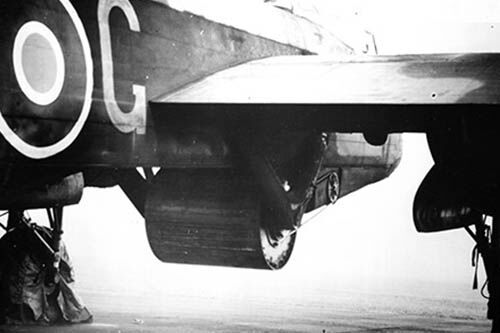
The bouncing bomb just looked like a big glorified dustbin
Dambusters veteran, Johnny Johnson, describes his first encounter with both the mission-modified aircraft and the bouncing bomb itself.
The Lancaster, a familiar sight to all men serving in Squadron 617, now had room for a larger bomb and an unexplained mechanism attached to the fuselage.
Still in the dark about almost all details of the secret mission, the men had only speculation to clarify the aircraft’s new features.
"The special aircraft arrived and this was a modified Lancaster; it had no mid-upper turret and the bomb bay was virtually sealed but they’d added these two arms sticking down just behind the nose. One of them had a bevelled wheel on the end of it."
They would eventually find out that the bevelled wheel served as a back-spinning mechanism for the release of the bomb.
"Then the bomb arrived - it just looked like a big glorified dustbin. When the bomb arrived, it then became obvious what these arms were for; that was how the bomb was going to be suspended onto the aircraft," Johnny says.
"That bomb we learnt later weighed 9,000lb of which 6,500lb were explosive. It was fused with two depth fuses that were set at a depth of 25ft. It also had a self-destruct fuse, which meant that if we had to drop it elsewhere on an attack then it would destroy itself and the Germans wouldn't have a copy. "
This blog is dedicated to the memory of Sergeant Jack Liddell, an air gunnerwith 617 Squadron on the Dambuster raid, who was killed in action on May 17, 1943, age 18.